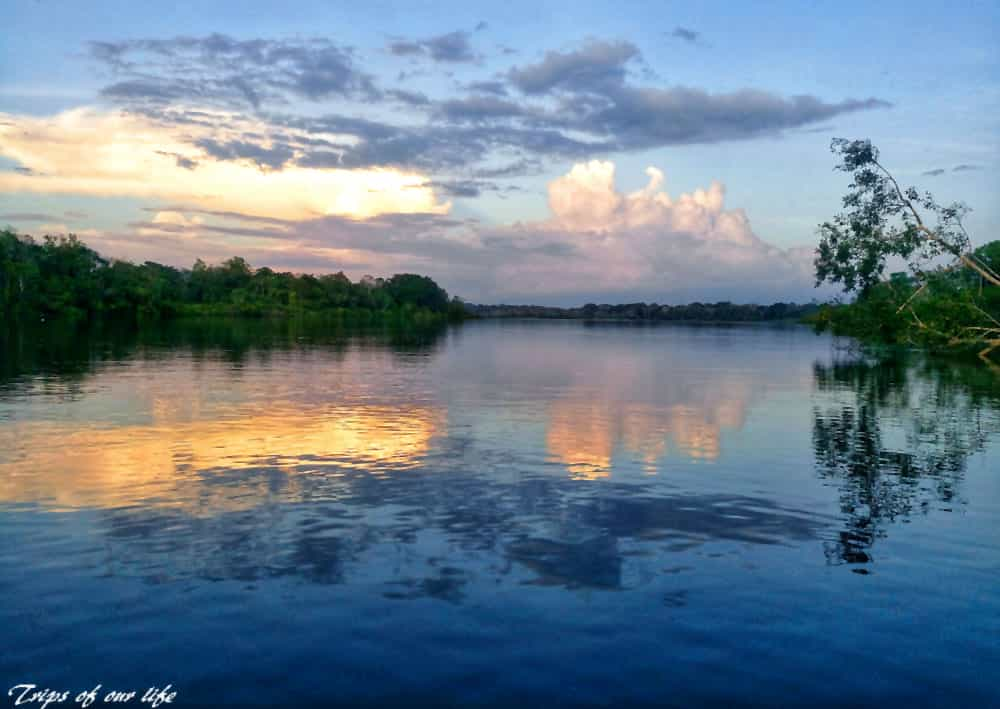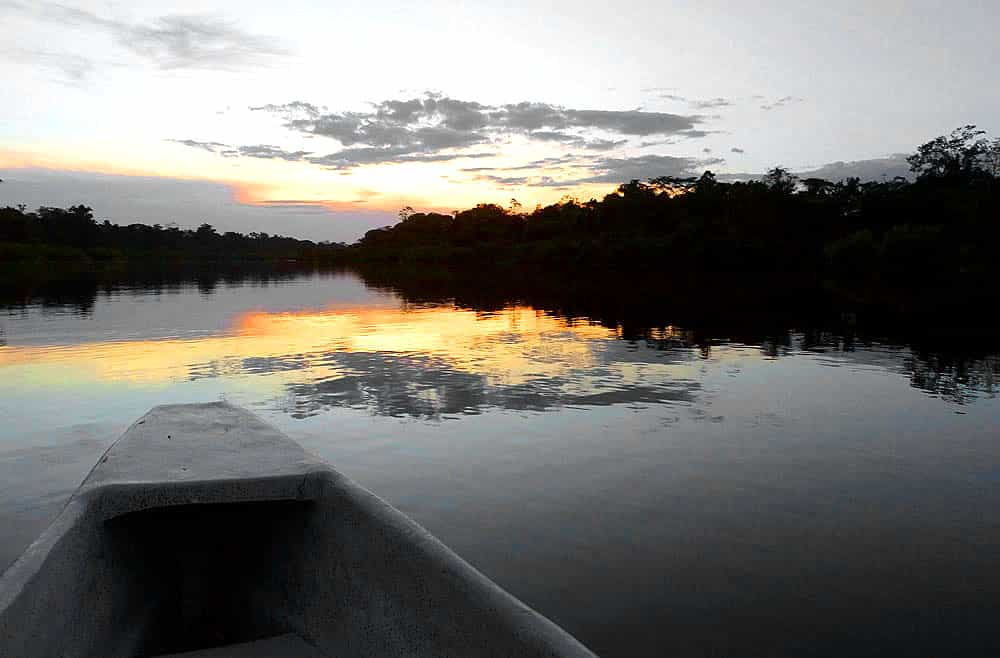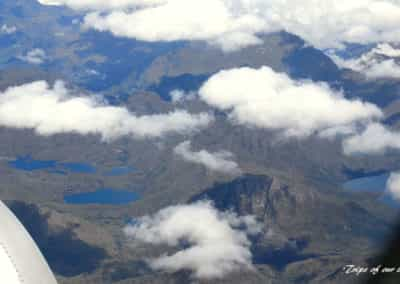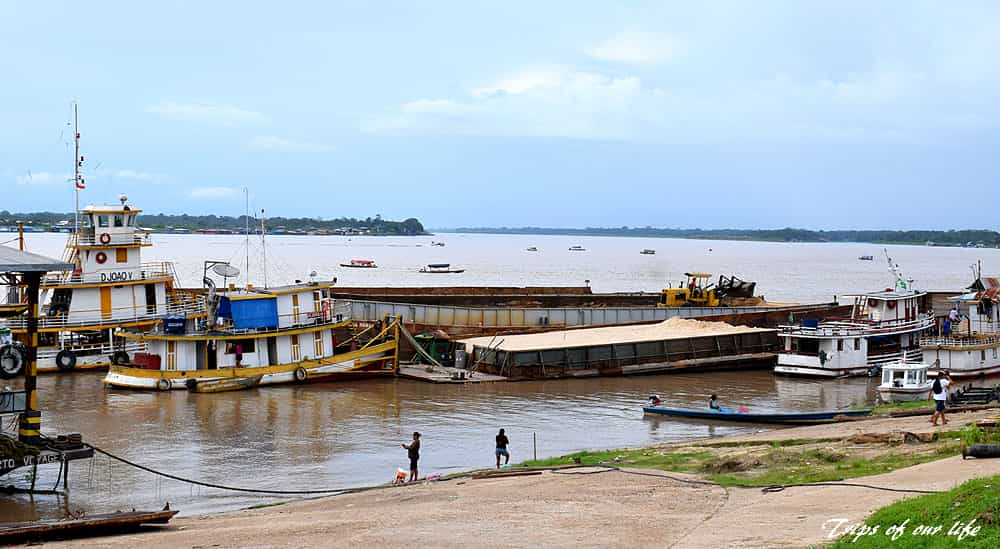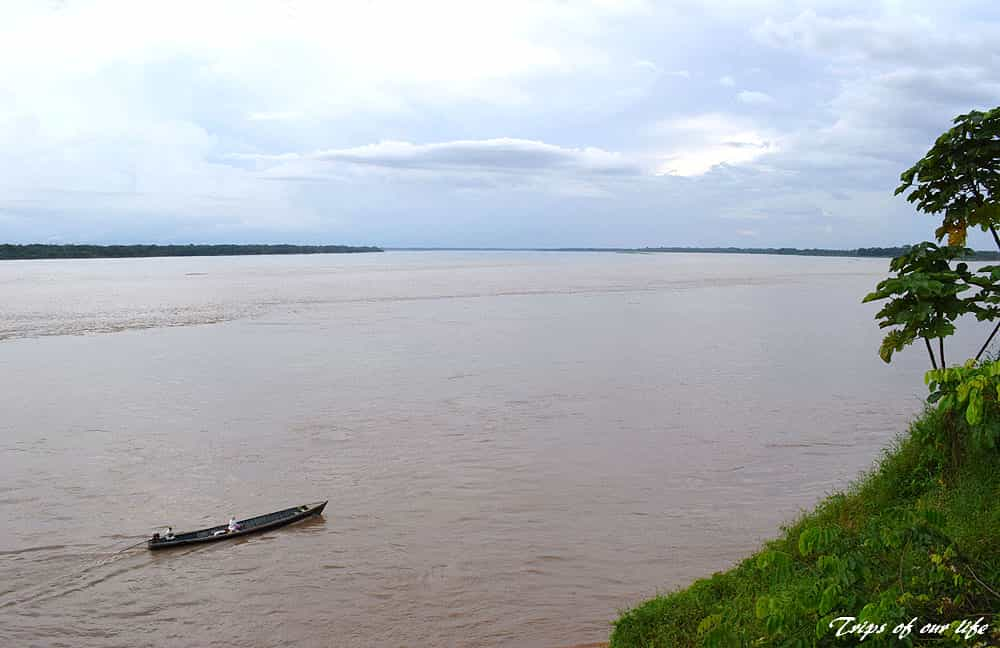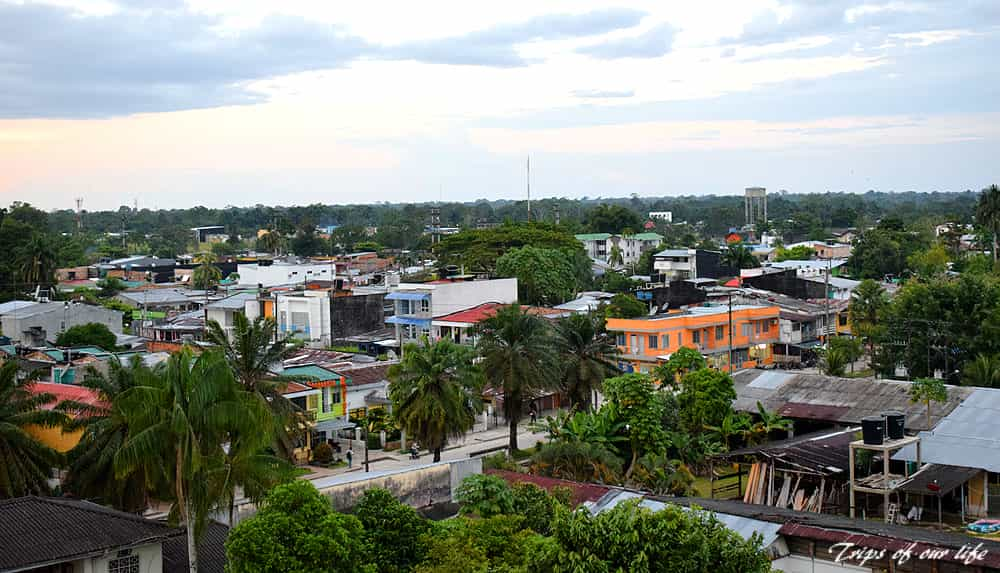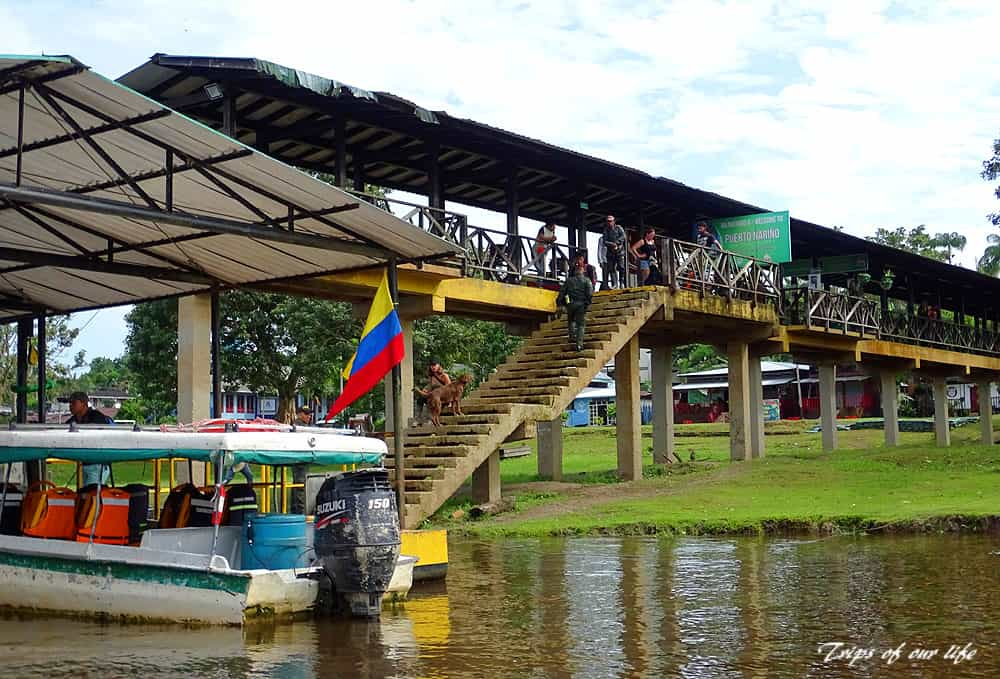My visit to the Amazonia was one of the best parts of my trip in Colombia, if not the best. The area is isolated from the rest of the country, at least at the moment, and the only way to visit is by airplane from the capital, or by boat from Peru and Brazil. The outcome: few tourists!!
Even though Amazonia covers more than 1/3 of the whole country, it is the most scarcely populated region and the hardest to access. It is not allowed to visit its biggest part, as it is occupied by drug dealers and rebels. That’s why the tours do not go too deep into the jungle, but are only limited around the Amazon river, where it is 100% safe. I spent 5 amazing days in the Colombian Amazonia with some difficulties, but also the best impressions. The pros and cons of this trip will be mentioned in the end of this post.
In this part of the Amazonia, it is not at all easy to wander around on your own (at least not yet). There is not ample information on the internet for independent travelers (unless of course you have time to search on site), so you have to book all tours and accommodation beforehand, via local travel agencies. I used “Αmazonas jungle tours” for a 4-day guided tour, based on the village Puerto Nariño in the heart of the jungle. The package price was far too high for Colombia, although it did include everything, accommodation, tours, transportation, all meals, private tour guide for all days and also a translator, if required. The locals do not speak any English, so if you do not speak Spanish, you would surely need a translator. My Spanish is average, but I anyway arranged for a translator, as I couldn’t possibly know some of the jungle terms and as many other times we needed help on schedule changes and advice from our guide.
To fly from Bogota to Amazonia, you can use only Avianca and Latam, both very expensive anyway. I flew there with Avianca and returned with Latam. The only airport in the Colombian Amazonia is the small city of Leticia, to the southernmost part of the country. After a spectacular flight above Bogota, the Andes and Amazonia and staring for long at the endless jungle, me and my co-traveler landed at Leticia, which is built on the shores of the Amazon river and the “tres fronteras” (tripoint) of Colombia, Brazil and Peru. As the boat schedules between the Amazonian villages are rather scarce and because of our midday, late-arriving flight, we knew we would miss the last boat to Puerto Nariño, so we had to stay in Leticia for the night.
A private taxi picked us up from the airport to the “Amazonas Jungle Tours” office, in order to pay and get informed for our tour schedule over the next days. Afterwards, we went to our room I had already booked at a local guesthouse, to leave our luggage and explore the area. Leticia is a small port-town of Colombia, which, however, extends to Brazil without distinct borders. We didn’t miss the chance to visit Tabatinga, also a port and a cruise starting point to Manaus of the Brazilian Amazon, using a local tuk tuk, for a few hours until the sunset. Our ride had to last only shortly because Tabatinga, even though a neighboring town, gets dangerous for tourists when the sun falls down, although Leticia is totally safe 24h/day!
As mentioned before, there are no borders; only a big road physically defines the transition from the Colombian pavement to the Brazilian one across the road. Therefore, at this spot you may wander between these two countries with absolutely no control. If you want to travel to the mainland from Tabatinga, you need to visit the respective passport control office to obtain a visa. As we were returning back to Colombia, we didn’t have to do so. So, we walked around the city, stopped at a chocolate store selling also other local products and then, we moved to the port and beyond the airport, towards a destination that had great views over the Amazon and opposite the river, to Peru.
On our way back to the Colombian part of the region, we really noticed how different the two neighboring towns are, but also the locals. They are both poor, but in Tabatinga the houses seemed even poorer, the town dirtier, with stray animals wandering around sick and starving, the locals being moody, looking at us with a not at all friendly face. In contrast, in Leticia was really clean and all locals were extremely polite, smiling the whole time.
The tuk tuk left us at the central square of Leticia and we went on the highest spot of the city, the bell tower of the central church with panoramic views to the Amazon. After wandering around the city until late at night, we returned to our room to rest, as our adventure in the Amazonian jungle would start on the following day!
Tabatinga port, Brazil
Views to Leticia and the Amazon river from the highest point of the town on the main church
The Amazon river in Tabatinga with views to Perú
The second day started very early in the morning by going to the agency, to get our rain boots and ponchos (it was still rainy season when we visited in March), along with a big water bottle for the first day (water in Amazonia is not drinkable and bottled water was provided exclusively by the agency over our whole stay). Then, we went to the port, from where we got the first boat to Puerto Nariño. 2.5 hours on a motorboat along the Amazon later, while staring at the sunrise above the dense jungle vegetation, we reached our destination. The whole Amazonian coastline was populated by small local communities, some of which could accommodate you after arrangement. We had arranged to stay with one of them overnight deeper in the jungle the following day. For now, Bienvenidos a Puerto Nariño!
Puerto Nariño is a small village inhabited by 800 people that, along with the Amazon tribes (mainly Tikunas, Cocama and Yagua) and their 4 communities, reaches a total population of 2,000 people. The most important element of this village is that it is considered an exemplar in the region, with its inhabitants exhibiting deep ecological and conservation consciousness and, hence, they preserve its environment, keeping it totally clean and giving fines to whoever litters. There are no vehicles (except for the one that collects the recycling) and all transfers are made on foot or by boat through the river. Each visitor pays a small entrance fee as soon as entering the wooden dock and then he/she is free to wander around across the village with safety any time of the day. The villagers, even though they do not speak English at all, are very friendly and they talk to you regardless of whether you may respond to their Spanish or not.
As soon as we arrived in the village, we met our team (our local guide Pedro and our translator Paulina), with whom we went directly for breakfast in the local restaurant, where we would have all our meals over the following few days. Afterwards, we left our stuff in our room, wore the appropriate clothes, sprayed ourselves with mosquito repellent and went off to our first trekking day in the Amazon jungle. We wandered around a forest behind the village for about 3.5 hours, a route rather difficult and muddy, which made walking even more tiring.
Vegetation was very dense, air temperature high and humidity even higher. However, the landscape was spectacular and we saw many different tropical plants and especially local fruit. Colombia is famous for specific fruit species that exist nowhere else in the world! Even if you spend your whole day in the rainforest, you will never starve. Every now and then, our guide offered us fresh fruit that he cut from various trees! We even ate the fruit of cocoa tree! Not only we were full of food, but we drank fresh water from inside the branches of a specific tree, which can filter the water inside the plant and thus make it drinkable!
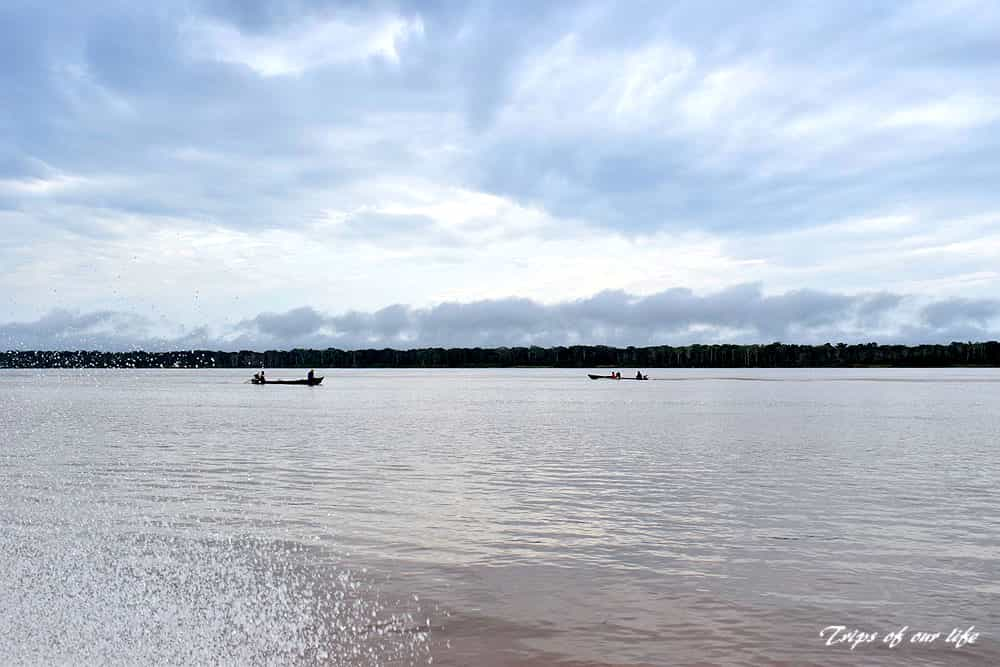
A 2,30hrs boat transfer from Leticia to Puerto Nariño across the Amazon river
Afterwards, we visited a small wooden observatory inside a lake with huge water lilies, where, caiman alligators live in, together with enormous pirarucu fish and water turtles. We had the chance there to feed free howler monkeys with tree seeds. These monkeys are obviously used to human presence, since they were playing with us all the time and finally fell asleep in Pedro’s lap.
We returned to the village for our lunch. After that, we went down to the port, for a laid-back ride to the Amazon river with our boat! Not that laid back, though.. When you are about to watch dolphins in their natural habitat, it is everything but restful! In just a few meters from Puerto Nariño, dolphins seemed to party!
In the Amazon river, a very special dolphin species (under extinction), the beautiful pink dolphin, lives together with the grey one. They swim together in the main river stream, but also along the smaller side rivers. So, as soon as we exited the side river of the village that meets the main Amazon river, we did not know where to look first, as we were literally surrounded by dolphins! The locals do not have – yet – the (bad) habit to feed wild animals, so that tourists may take pictures, so dolphins were swimming around us, but without being able to easily take pictures of them outside the water. After a quite long time in that spot, we proceeded with the boat to calmer waters towards the side river, where we continued our dolphin watching. We also met other jungle animals, like sloths and monkeys on the trees, many tropical birds and enjoyed the picturesque sunset of the Amazon.
Then returned to our restaurant for dinner, afterwards a small night walk in the village and then rest, as new adventures were awaiting for us the following day!
Passing by local communities on the shores of the Amazon river
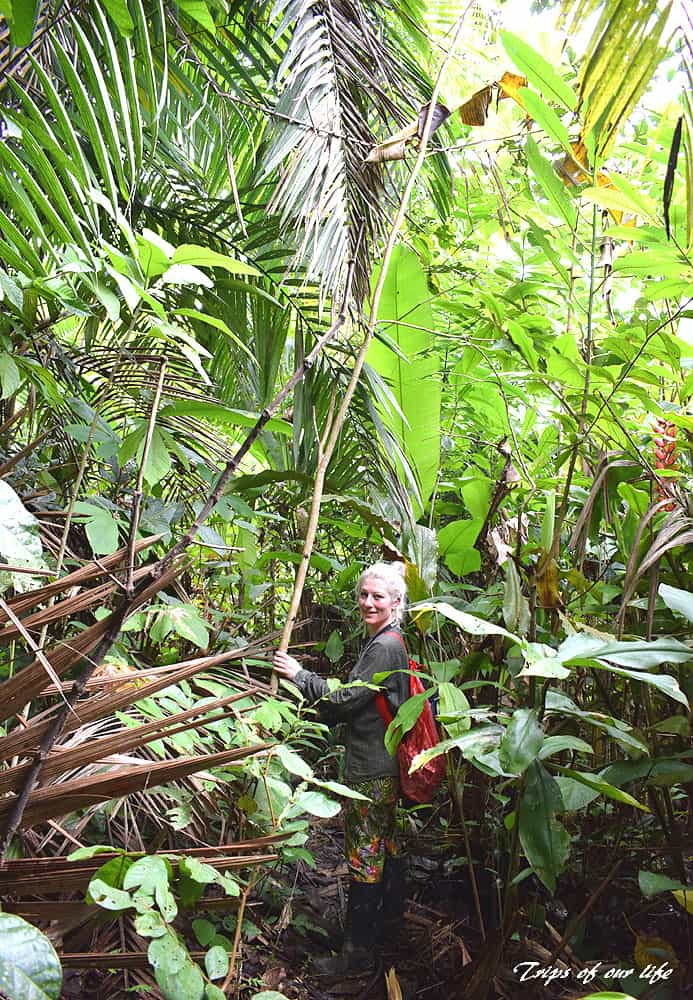
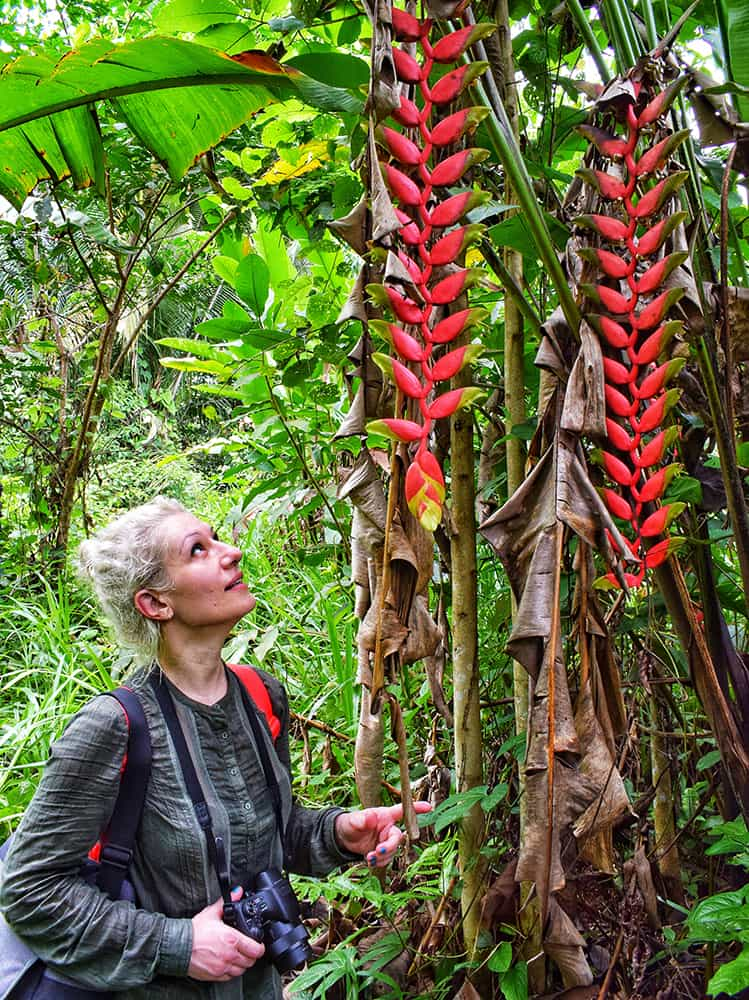
Arriving at Puerto Nariño
Catch of the day: pirarucu fish for lunch!

Ready to explore the flooded rainforest of Puerto Nariño, walking on paths full of mud
Drinking fresh water from a cut branch
Α cocoa fruit

Trying to feed and play with the naughty howler monkey in the Amazonian rainforest with our team
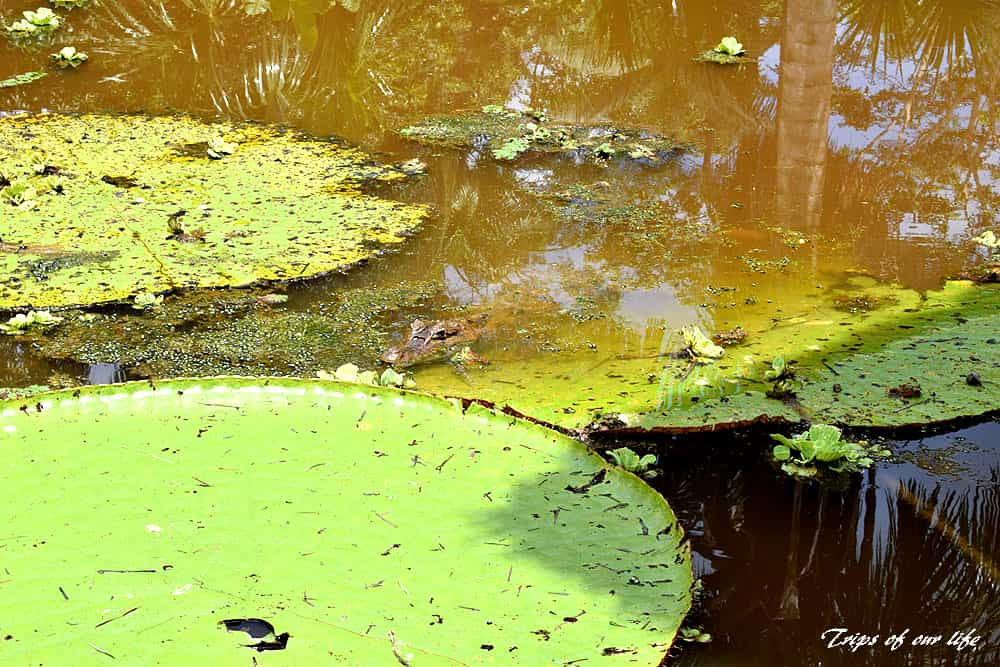
A caiman alligator resting on the huge waterlilies of a small lake in the jungle
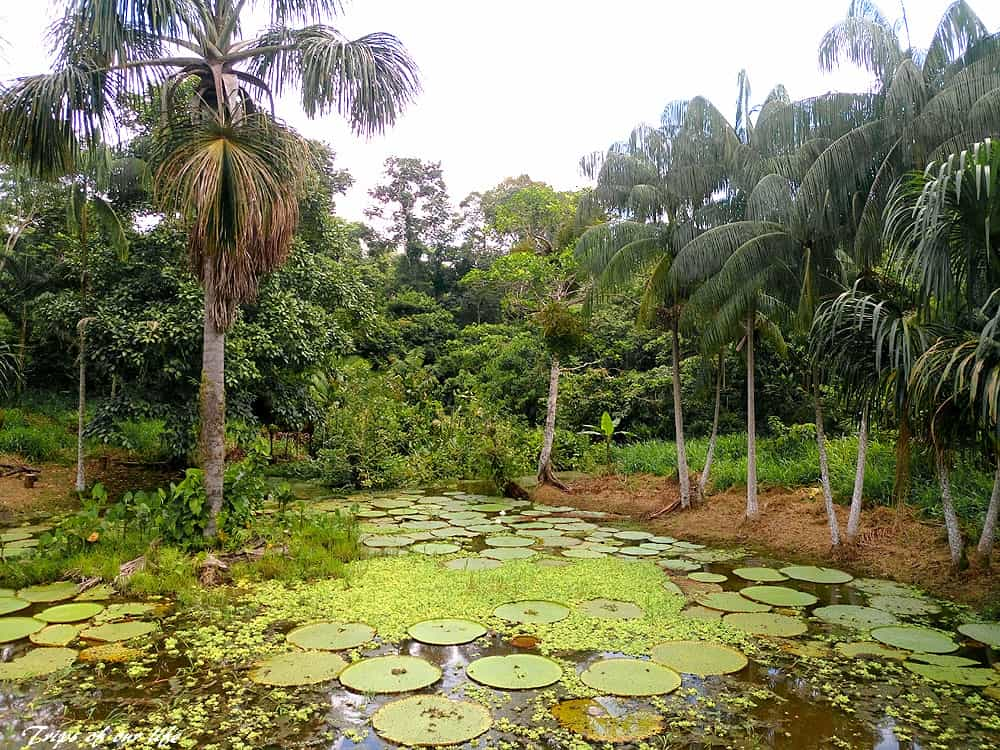
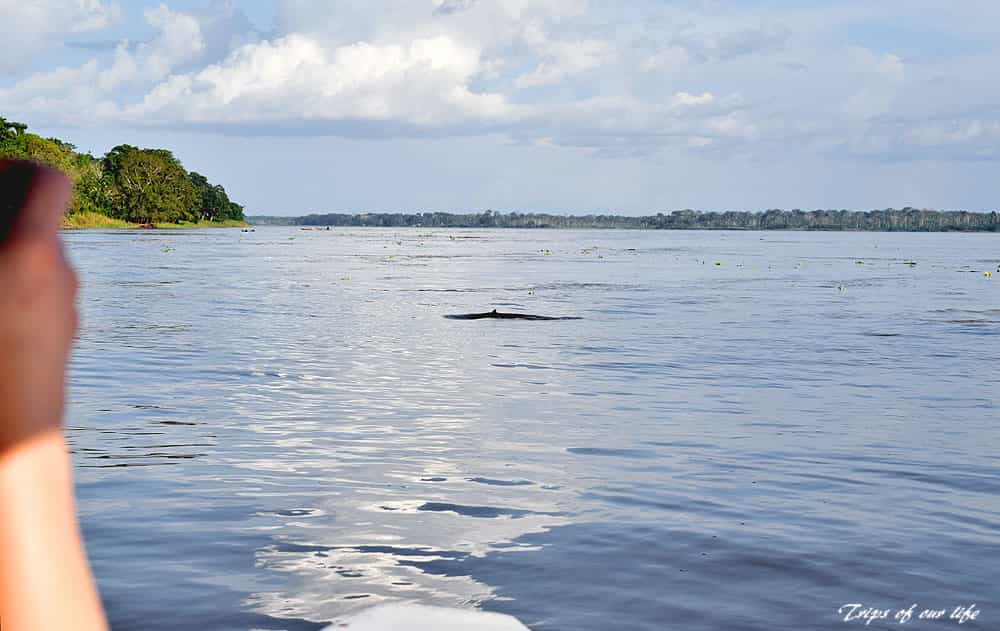

We met several sloths on the trees during our boat ride on the Amazon river…bonus: the unforgettable magical sunsets!
